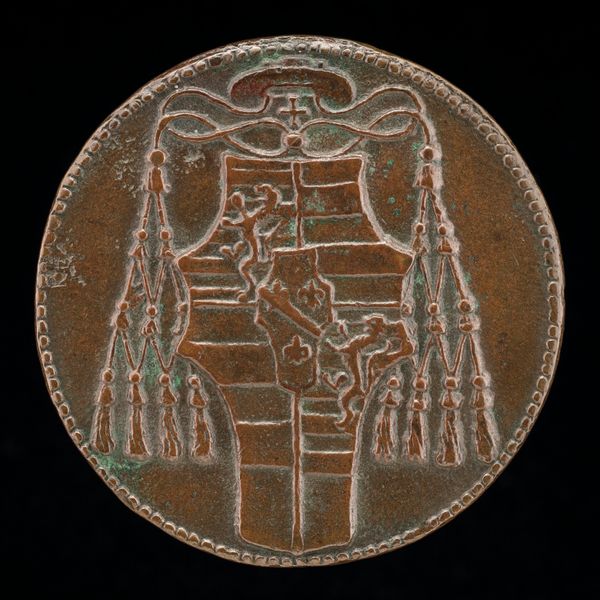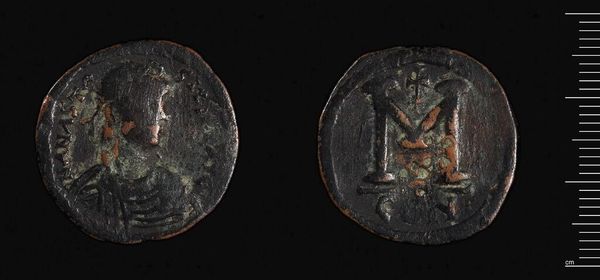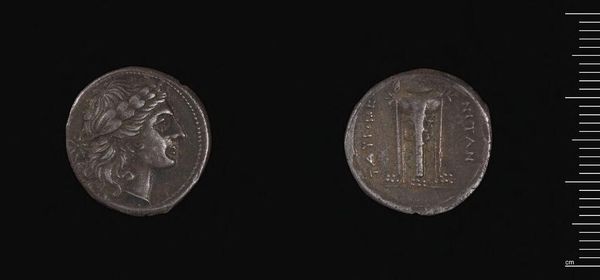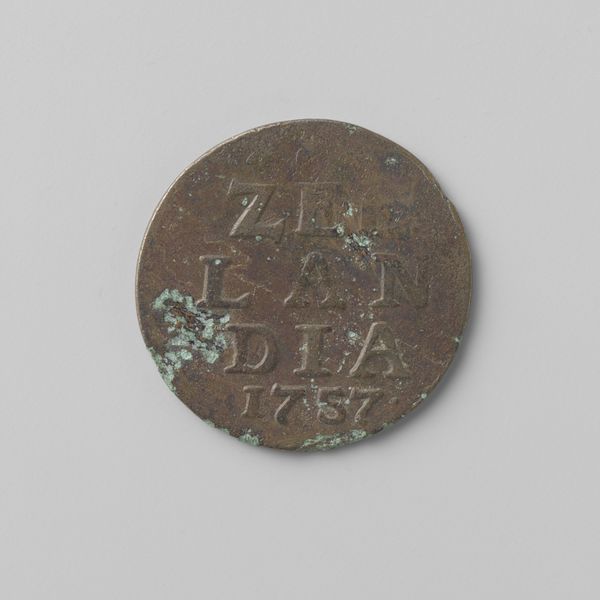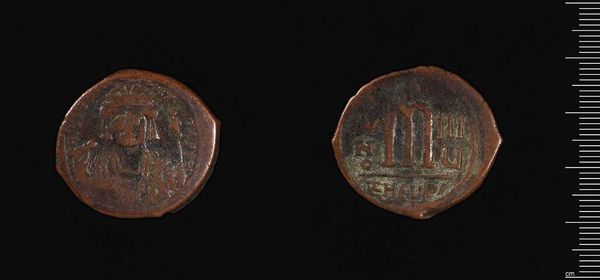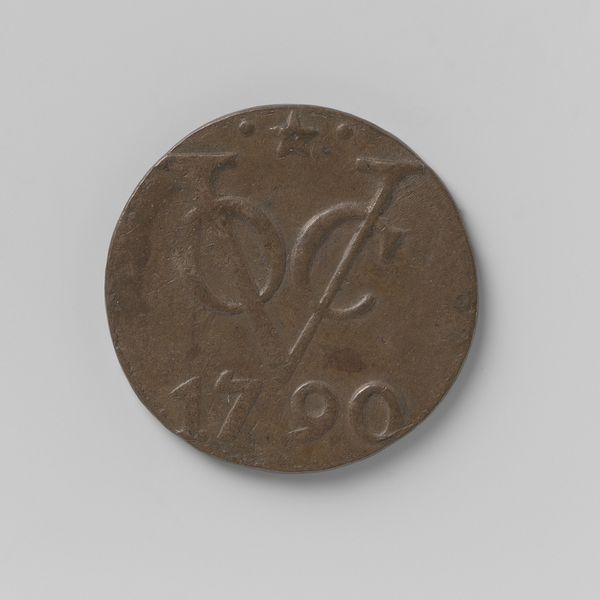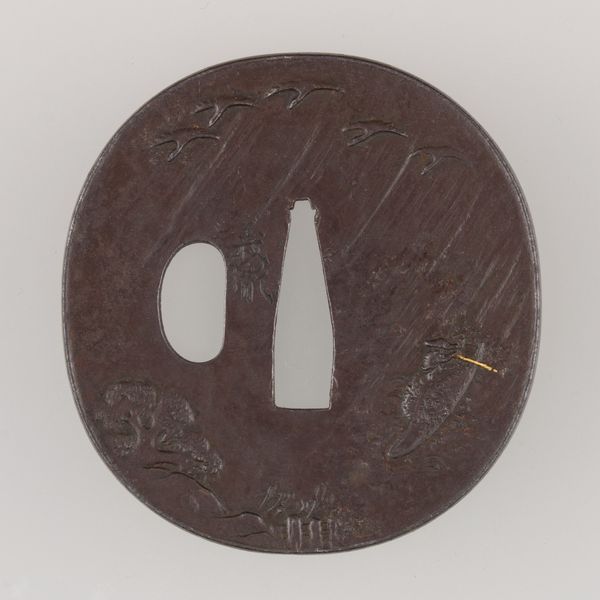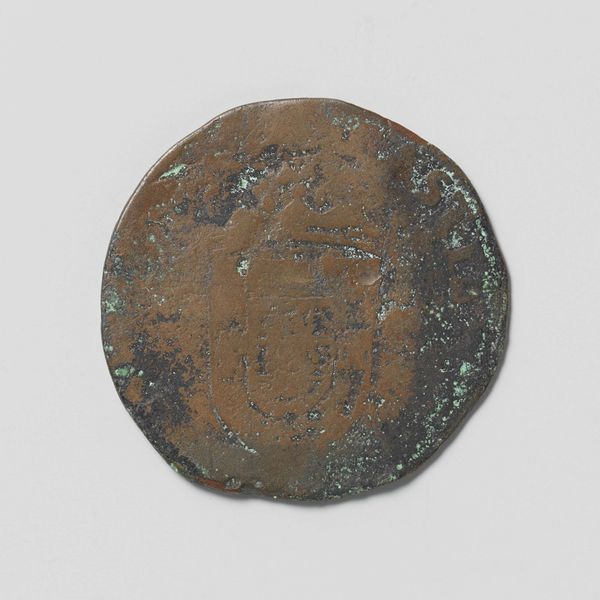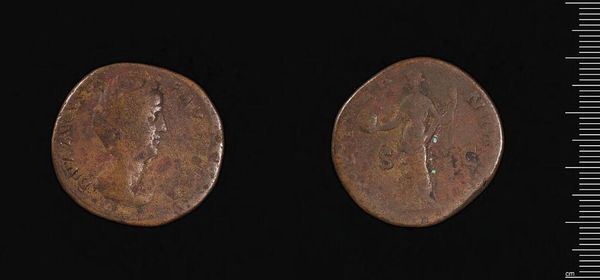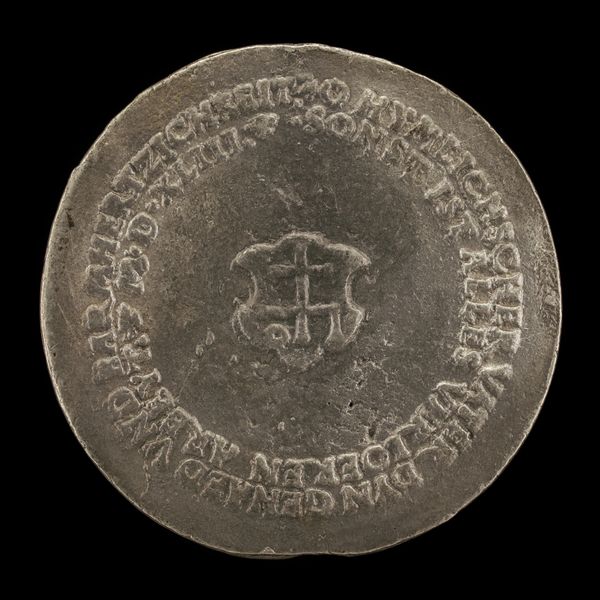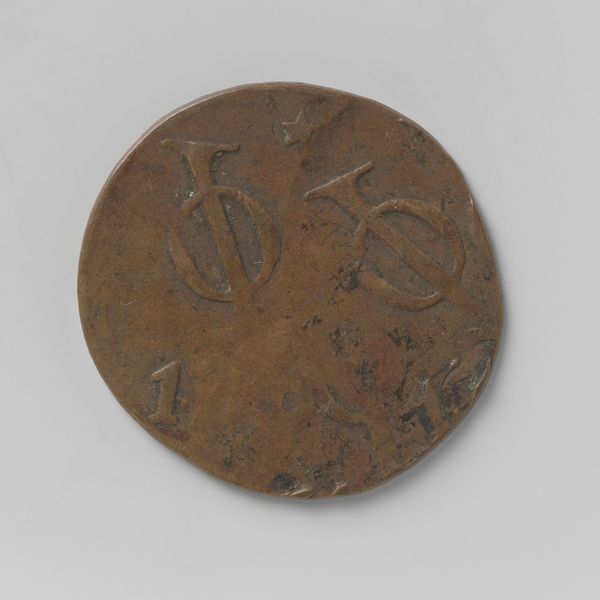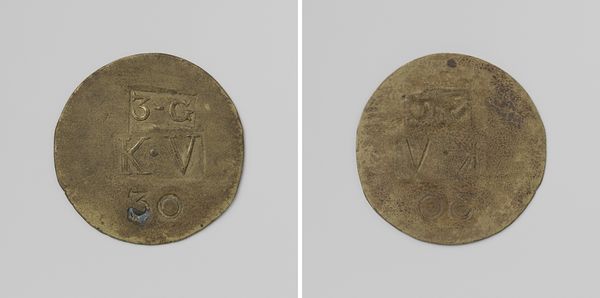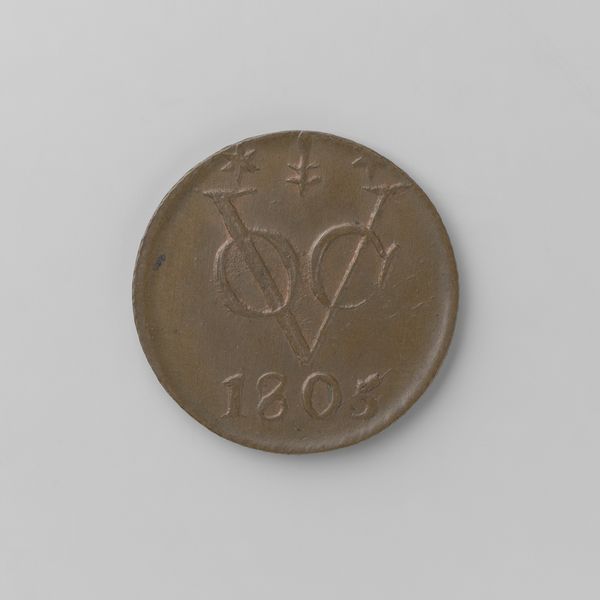![Closed Book [reverse] by Matteo de' Pasti](/_next/image?url=https%3A%2F%2Fd2w8kbdekdi1gv.cloudfront.net%2FeyJidWNrZXQiOiAiYXJ0ZXJhLWltYWdlcy1idWNrZXQiLCAia2V5IjogImFydHdvcmtzL2QyZTNjMGQwLTgxY2QtNDM4OC1hNmNiLTM5NjNmNDlhN2YxMi9kMmUzYzBkMC04MWNkLTQzODgtYTZjYi0zOTYzZjQ5YTdmMTJfZnVsbC5qcGciLCAiZWRpdHMiOiB7InJlc2l6ZSI6IHsid2lkdGgiOiAxOTIwLCAiaGVpZ2h0IjogMTkyMCwgImZpdCI6ICJpbnNpZGUifX19&w=3840&q=75)
metal, relief, sculpture
#
medal
#
metal
#
sculpture
#
relief
#
geometric
#
sculpture
#
italian-renaissance
#
miniature
Dimensions: overall (diameter): 4.07 cm (1 5/8 in.) gross weight: 35.67 gr (0.079 lb.) axis: 12:00
Copyright: National Gallery of Art: CC0 1.0
Curator: Welcome. Before us, we have a metal relief sculpture created by Matteo de' Pasti around 1454. It's a circular medal depicting what appears to be a closed book. Editor: Immediately, I’m drawn to the weight of this piece. The density of the metal conveys a sense of importance and permanence despite its modest scale. I imagine how the artisan worked the material, heating and hammering. Curator: Indeed. Consider the composition itself. The closed book occupies the center, a square form resisting the roundness of the medal. There is lettering arranged geometrically around the edges of the medal. Editor: Right, but let’s not overlook the laborious process behind these metal artworks. The act of minting itself— the very physical imprint—speaks volumes about its cultural value in Renaissance Italy, circulating ideas and authority. It wasn't merely an aesthetic object, but a product of its time. Curator: Yet, that cultural value becomes intrinsically tied to its formal qualities. The clean lines and minimalist design are striking and give it a modern sensibility despite its age. Editor: To me, the interest lies in understanding the materiality that elevates what would have otherwise been considered craft. A metal like this would’ve taken skill, intense labor, and resources to produce— it certainly elevates the subject of the piece and imbues a significance far exceeding that of mere surface aesthetics. Curator: Interesting points, though perhaps we can still appreciate the geometric perfection within that material, a visual anchor communicating beyond the means of production. The arrangement around the square creates an additional layer. Editor: Perhaps. By carefully combining a discourse on medium and theory, we can consider the art's intrinsic, material properties alongside an interpretation based on semiotics or formalism. That is what breathes fresh meaning into works such as this one.
Comments
No comments
Be the first to comment and join the conversation on the ultimate creative platform.
